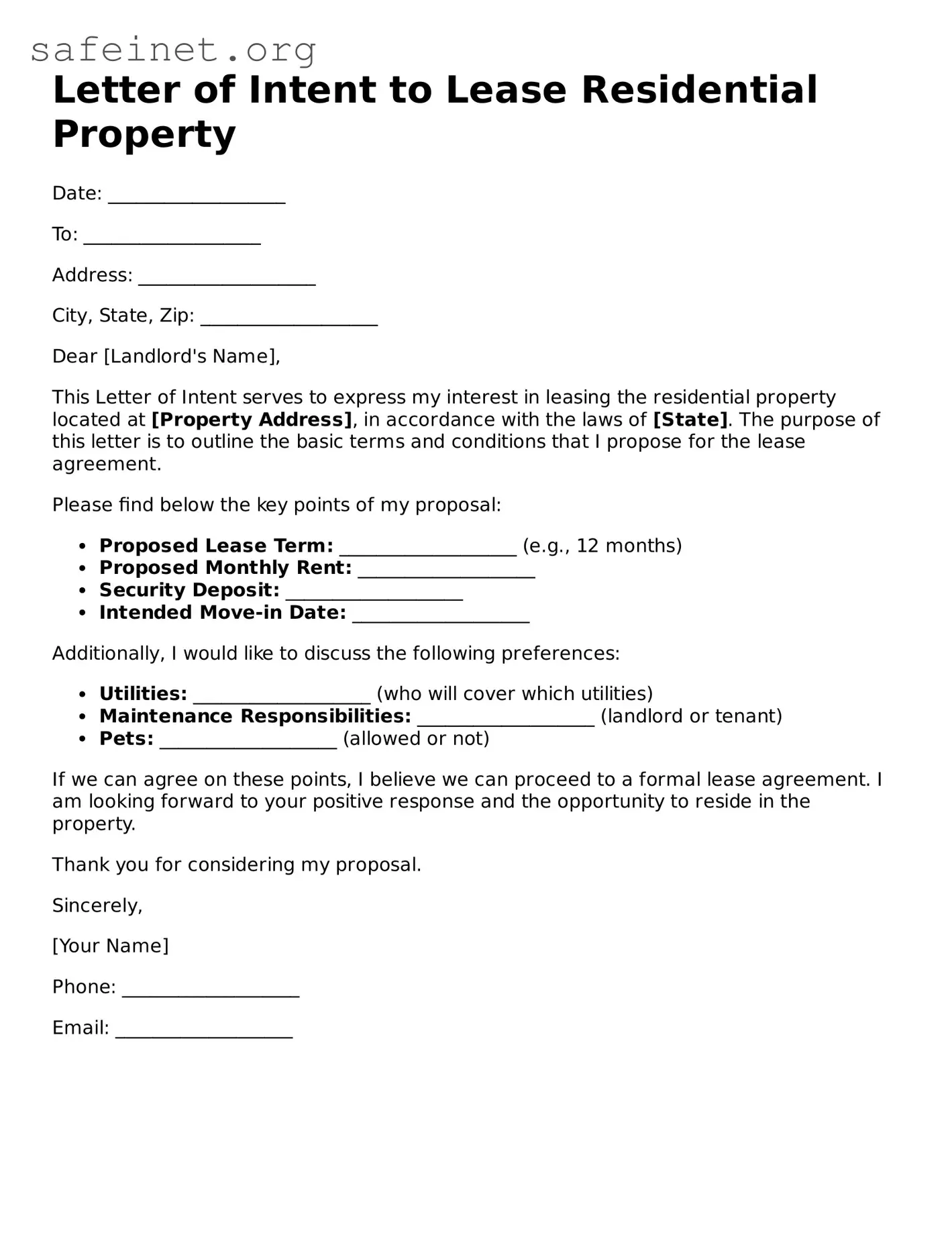Letter of Intent to Lease Residential Property
Date: ___________________
To: ___________________
Address: ___________________
City, State, Zip: ___________________
Dear [Landlord's Name],
This Letter of Intent serves to express my interest in leasing the residential property located at [Property Address], in accordance with the laws of [State]. The purpose of this letter is to outline the basic terms and conditions that I propose for the lease agreement.
Please find below the key points of my proposal:
- Proposed Lease Term: ___________________ (e.g., 12 months)
- Proposed Monthly Rent: ___________________
- Security Deposit: ___________________
- Intended Move-in Date: ___________________
Additionally, I would like to discuss the following preferences:
- Utilities: ___________________ (who will cover which utilities)
- Maintenance Responsibilities: ___________________ (landlord or tenant)
- Pets: ___________________ (allowed or not)
If we can agree on these points, I believe we can proceed to a formal lease agreement. I am looking forward to your positive response and the opportunity to reside in the property.
Thank you for considering my proposal.
Sincerely,
[Your Name]
Phone: ___________________
Email: ___________________
